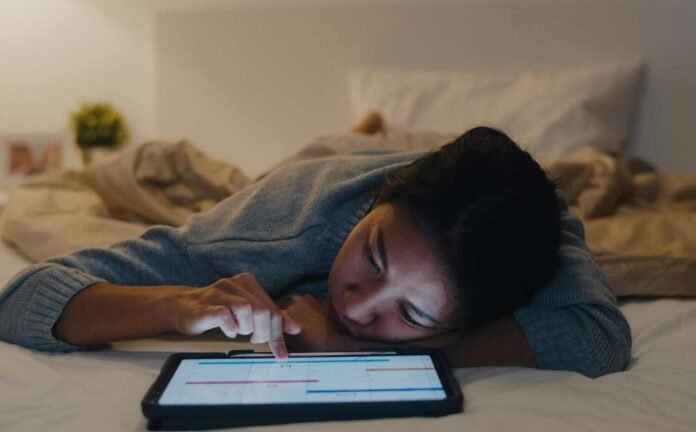In our digitally dominated world, screens are our constant companions—brightening our days but potentially disrupting our nights. The link between “blue light and sleep” has become a hot topic among health professionals and technology users alike.
This article explores how blue light affects sleep and sleep quality, offering actionable, tech-friendly bedtime tips to harmonize your digital life with your sleep needs.
Understanding the Influence of Blue Light and Sleep
Blue light, part of the visible light spectrum, is known for its high energy and short wavelength. It’s abundant in sunlight, playing a pivotal role in managing our circadian rhythms.
However, artificial sources, such as smartphones, tablets, and LED screens, also emit blue light, leading to potential sleep disturbances when used extensively at night.
How Blue Light Affects Sleep
The evening exposure to blue light can deceive our brain into believing it’s still daytime, leading to diminished melatonin production—the sleep-inducing hormone. This biochemical response can delay sleep onset, decrease sleep quality, and disrupt the sleep cycle, leaving individuals feeling less rested upon waking.
There are affiliate links on this page, which means we may earn a small commission should you buy after clicking on one, or more of those links. At no extra cost to you.
Navigating Tech for Better Sleep
To mitigate the impact of blue light and enhance sleep quality, consider incorporating these strategies into your nightly routine:
- Activate Blue Light Filters: Utilize built-in features on electronic devices that reduce blue light exposure. Tools like Night Shift on iOS or Night Light on Windows adjust your screen’s color temperature to lessen blue light emission in the evening hours.
- Embrace a Screen-Free Bedroom: Cultivate a habit of disconnecting from digital devices at least one hour before bedtime. Designate your bedroom as a screen-free zone to support a more restful environment.
- Opt for Ambient Lighting: In the evening, use warmer light sources with minimal blue light, such as red or orange-hued lights, to prepare your body for sleep.
- Modify Your Screen Habits: If avoiding screens before bed is impractical, dim the screen brightness and maintain a comfortable distance from your eyes to the screen to minimize blue light exposure.
- Consider Blue Light Blocking Glasses: For those evening hours spent in front of a screen, blue light blocking glasses can be a helpful barrier, filtering out blue light and potentially protecting your circadian rhythm.
Real-Life Adjustments for Improved Sleep
Scenario 1: Kevin, an avid gamer, finds it hard to wind down after late-night gaming sessions, affecting his sleep.
Solution: Kevin decides to set a strict gaming cutoff time 90 minutes before bed and switches to reading as part of his new bedtime routine, significantly improving his ability to fall asleep.
Scenario 2: Lisa, who often scrolls through social media before sleep, complains of restless nights.
Solution: Lisa starts using blue light blocking glasses and sets her phone to automatically switch to a warmer color spectrum in the evening. She notices a marked improvement in her sleep quality within weeks.

Conclusion: How Blue Light Affects Sleep
The balance between technology and health is delicate, especially concerning “blue light and sleep.” By understanding the effects of blue light and implementing tech-friendly strategies, it’s possible to enjoy the benefits of our digital devices without compromising our sleep. Integrating these habits can pave the way to better sleep health, ensuring that our screens serve us without stealing our precious rest.
Adapting to these changes may require time and patience, but the positive impact on your sleep quality and overall well-being is well worth the effort. Let’s reclaim our nights for restful sleep, even in a world aglow with screens.
10 Bedtime Habits for Better Sleep: Creating Your Perfect Nighttime Routine

Building a bedtime habits and nighttime routine is a personal journey. What works for one person may not work for another. Start by introducing one or two habits that resonate with you, and gradually build up to a full routine. Listen to your body and adjust as necessary.
The goal is to create a series of rituals that signal to your body it’s time to wind down and prepare for a restful night’s sleep.
How many of these bedtime habits are part of your bed time routine?
10 Bedtime Habits for Better Sleep: Creating Your Perfect Nighttime Routine






